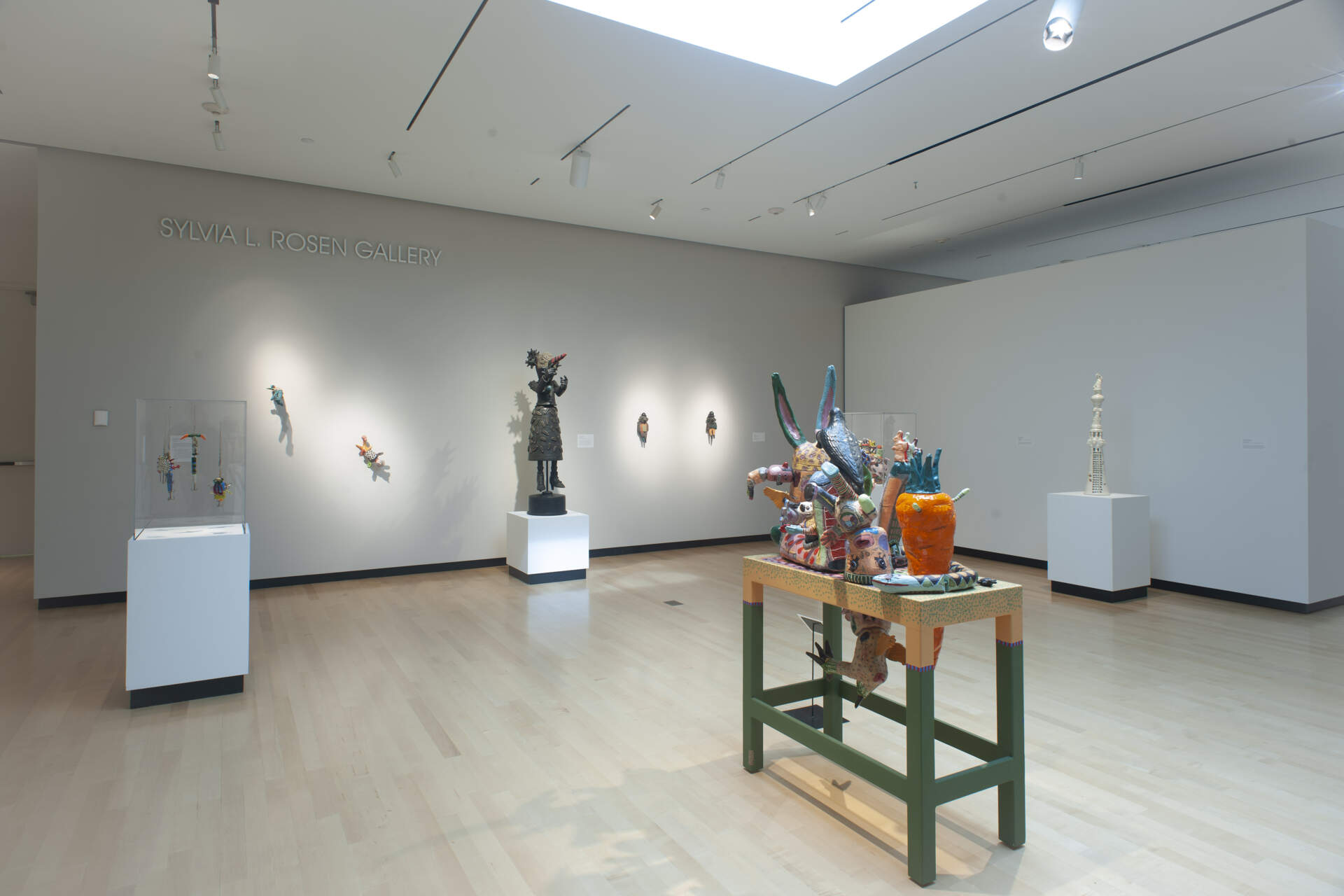
Bill Stewart & A Shaman’s World
Past
Jul 9, 2021 - Feb 27, 2022
To pay homage to the whimsical, enigmatic, soothsayer artist William (Bill) Stewart (1941-2020), the Burchfield Penney Art Center will exhibit all his works in the collection, with the addition of a few loans, that provide a peak at his incredible creative imagination—a world filled with shamans, chimeras, and other beings.
The museum’s most recent acquisition, Elder’s Striped Socks (2013), which stands more than six feet tall, exemplifies the complexity of his vision. It might be considered a manifestation of any artist, including himself, as an oracle of nightmarish thoughts about our world that we feel powerless to confront. Bill Stewart generously donated the glazed terra cotta figure from his Shaman series shortly before he moved from the area where he taught and created a formidable conclave of sculpture.
It was first exhibited at the Burchfield Penney Art Center in the biennial exhibition, Art in Craft Media 2015, and was included in his solo exhibition, Where I’ve Been, at Indigo Art in Buffalo in 2019. Writing about his work, Head of Collections Nancy Weekly introduced the background to his unique, mystical figures:
In cultures all over the globe, people respect shamans as healers and intermediaries who can provide spiritual guidance. The shaman connects with the natural world, often evoking the spiritual essence of the landscape, as well as living creatures and humans. He or she might facilitate a “journey” or out-of-body experience, remove negative energy through incantations, or conjure up animal spirits as human protectors. Every individual receives a unique resolution for the initial problem during the shaman’s communication mediation.
Through the ceramic sculpture of Bill Stewart, we can see that the mystical powers of shamans are as complex and unfathomable as they are diverse. His nationally acclaimed work is simultaneously humorous and intriguing, while also being mystifying and daunting. Over the course of his career, Stewart has created playful, expressionistic clay figures which frequently have both human and animal characteristics. Cyclically, they have been monochromatic, then wildly colorful. Either way, they are always texturally intricate and patterned on two- and three-dimensional planes.
Ranging from small, colorful fishing lures of imaginary creatures to pitch-black monoliths, Stewart’s sculptures emerged from childhood’s imagination and popular culture merged with his knowledge of the history of ceramics; respect for the artifacts and spiritual practices of African, Central American, South American, Asian, and indigenous Native American cultures; and pure improvisation. Each sculpture invites interpretation of its myriad components. We are challenged to find meaning implied in the juxtaposition of disparate parts. For example, Stewart references the rich history of international ceramics, such as Pre-Columbian black terra cotta vessels and figurally ornamented African earthenware ritual vessels and lidded pots. From more recent history, one can discern characters reminiscent of the Beatles’ Yellow Submarine and Walt Disney animations, as well as the ubiquitous rubber ducky. Colorful embellishments and textural patterns summon striking West African masquerades in which priests and priestesses are transformed into surreal beings that merge plant, animal, and human realms.
At times Stewart’s work is flamboyant, a riotous conglomeration of animals, birds, cars, fish, insects, snakes, toys, and countless other details that are deconstructed, mixed up, and reassembled in uncanny combinations that skew all meaning. Both whimsical and enigmatic, the final sculpture might be a single color, like white or black, or glazed with a rainbow of bright, flashy colors. Either way, we are welcomed into his fantasy world. We see dreams we want to share, like Alice’s journey through Wonderland. We also see premonitions of a world in conflict, an endangered environment. Wisely, we seek the shamans who might provide advice to lead us from the nightmares that seem impossible to escape. Bill Stewart wants us to see how we must become better stewards of the world. After forays into the unconscious world of daydreams and fantasies, we might better imagine a homogeneous unity of all living things and navigate the frightening challenges that await deliberate efforts to find solutions.